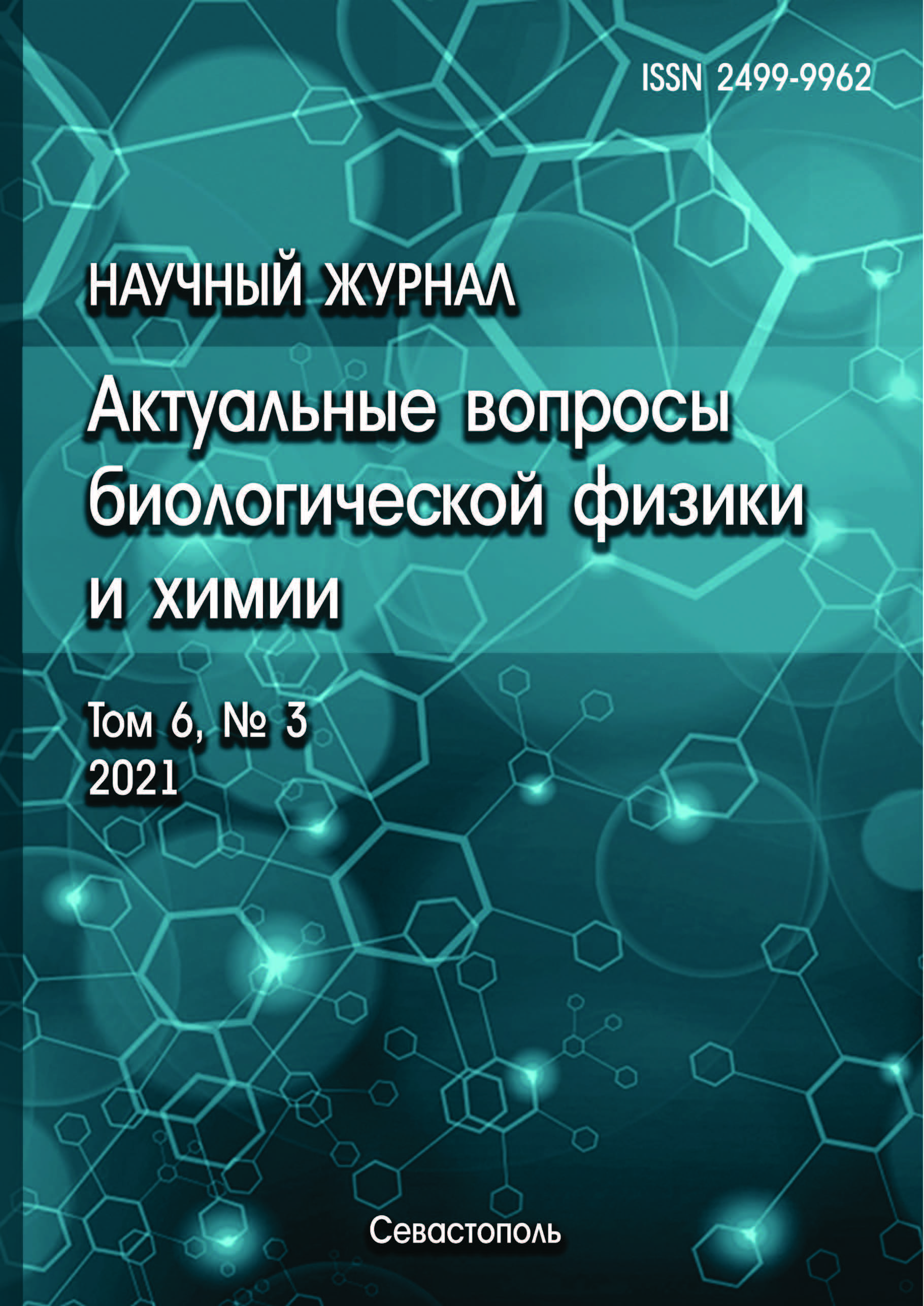Electromagnetic radiation refers to exogenous physical factors of the impact environment, which can cause significant changes in the human body, both positive and negative. The aim of our experimental studies was to investigate the effect of non-ionizing electromagnetic radiation of the decimeter range on the level of ceruloplasmin activity in the blood. The tasks of the work were to identify the content of ceruloplasmin, serum iron and malondialdehyde. The results of the study showed significant differences in the concentration of ceruloplasmin in comparison with the indicators of the control group were found in those irradiated for 1 and 4 weeks. Compared with the control group, in animals irradiated for 1 week, the concentration of ceruloplasmin was higher by 67.2% (p <0.01), in animals irradiated for 4 weeks, by 28.7% (p <0.05). At the same time, the concentration of ceruloplasmin was significantly lower after irradiation for 4 weeks than in the 1-week group. Serum iron in experimental animals increases by 46.8% (p <0.05) and 28.3% compared to the control group (23.3 ± 0.8 mkmol / l) only after 1 and 3 weeks of irradiation (34.2 ± 5.3 and 29.9 ± 2.7 mkmol / l). In general, the amount of iron increases relative to control. However, no significant increase is observed at 2-4 weeks. The content of malondialdehyde in the blood of the irradiated rats was increased in comparison with the control animals. This increase was most pronounced after 3-4 weeks of exposure. In the subsequent periods of irradiation, the concentration of malondialdehyde was, on average, 18% higher than the control values. Thus, under conditions of intensive generation of free radicals, the preliminary introduction of ceruloplasmin is not effective enough. Moreover, there is a danger that ceruloplasmin, as a metal-binding protein, under oxidative stress, a decrease in blood pH and oxidative destruction can be a source of active forms of variable valence metals that provoke free radical oxidation.
electromagnetic radiation, ceruloplasmin, serum iron, blood, malondealdehyde
1. Aleksandrova E.B. Dinamika antioksidantnoy sistemy organizma pod deystviem sverhvysokochastotnogo izlucheniya. Vestnik Chelyabinskogo gosudarstvennogo universiteta, 2014, № 13, s. 324. @@Aleksandrova E.B. Dinamika antioksidantnoi sistemi organizma pod deistviem sverhvisokochastotnogo izlucheniya. Vestnik Chelyabinskogo gosudarstvennogo universiteta, 2014, no. 13, p. 324. (In Russ.)
2. Abbasova M.T., Gadzhiev A.M. Study of changes of protein carbonyl content and lipid peroxidation product in blood of rats exposed to desimeter electromagnetic radiation (460 MHz). Journal of Medical and Biological seciences, USA, 2014, vol. 1, pp. 89-92.
3. Burchard J.F., Nguyen D.H., Black E. Macro- and utrace element concentrations blood plazma and cerebrospinal fluid of dairy cows exposed to electric and agnetic fields. Bioelectromagnetics, 1999, vol. 20, pp. 358-364.
4. Andreeva L.I., Kozhemyakin L.A., Kishkun A.L. Modifikacii metoda opredeleniya perekisey lipidov v teste s tiobarbiturovoy kislotoy. Laboratornoe delo, 1988, no. 11, pp. 41-44. @@Andreeva L.I., Kojemyakin L.A., Kishkun A.L. Modifikacii metoda opredeleniya perekisei lipidov v teste s tiobarbiturovoi kislotoi. Laboratornoe delo, 1988, no. 11, pp. 41-44. (In Russ.)
5. Kamyshnikov V. Metody klinicheskih laboratornyh issledovaniy. Minsk, 2016, s. 716. @@Kamishnikov V. Metodi klinicheskih laboratornih issledovanii. Minsk, 2016, p. 716. (In Russ.)
6. Krzyminiewski R., Dobosz B., Kubiak T. The influence of radiotherapy on ceruloplasmin and transferrin in whole blood of breast cancer patients. Radiat Environ Biophys, 2017, vol. 56, pp.345-352. DOI: https://doi.org/10.1007/s00411-017-0708-3; EDN: https://elibrary.ru/YGLYHC
7. Ryabchenko N.I., Ivannik B.P., Ryabchenko V.I., Dzikovskaya L.A. Vliyanie ioniziruyuschego izlucheniya, vvedeniya ionov zheleza i ih helatnyh kompleksov na oksidantnyy status syvorotki krovi krys. Radiacionnaya biologiya. Radioekologiya, 2011, vol. 51, no. 2, pp. 229-232. @@Ryabchenko N.I., Ivannik B.P., Ryabchenko V.I., Dzikovskaya L.A. Vliyanie ioniziruyuschego izlucheniya_vvedeniya ionov jeleza i ih helatnih kompleksov na oksidantnii status sivorotki krovi kris. Radiacionnaya biologiya. Radioekologiya, 2011, vol. 51, no. 2, pp. 229-32. (In Russ.)
8. Yakymenko I., Tsybulin O., Sidorik E., Henshel D., Kyrylenko O., Kyrylenko S. Oxidative mechanisms of biological activity of low-intensity radiofrequency radiation. Electromagn. Biol. Med., 2016, vol. 35, no. 2, pp. 186-202. DOI: https://doi.org/10.3109/15368378.2015.1043557; EDN: https://elibrary.ru/WOGYHV
9. Lewicka M., Henrykowska G., Pacholski K., Szczęsny A, Dziedziczak-Buczynska M., Buczyński A. The Impact of Electromagnetic Radiation of Different Parameters on Platelet Oxygen Metabolism - In Vitro Studies. Adv. Clin. Exp. Med., 2015, vol. 24, pp. 31-35.










